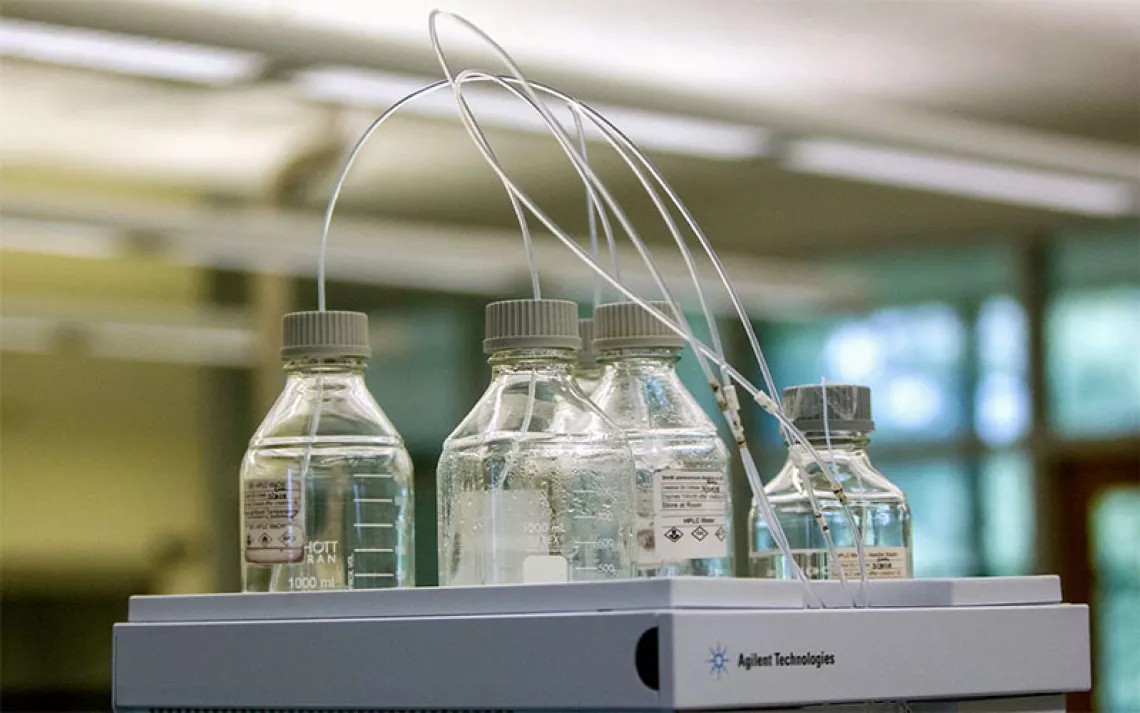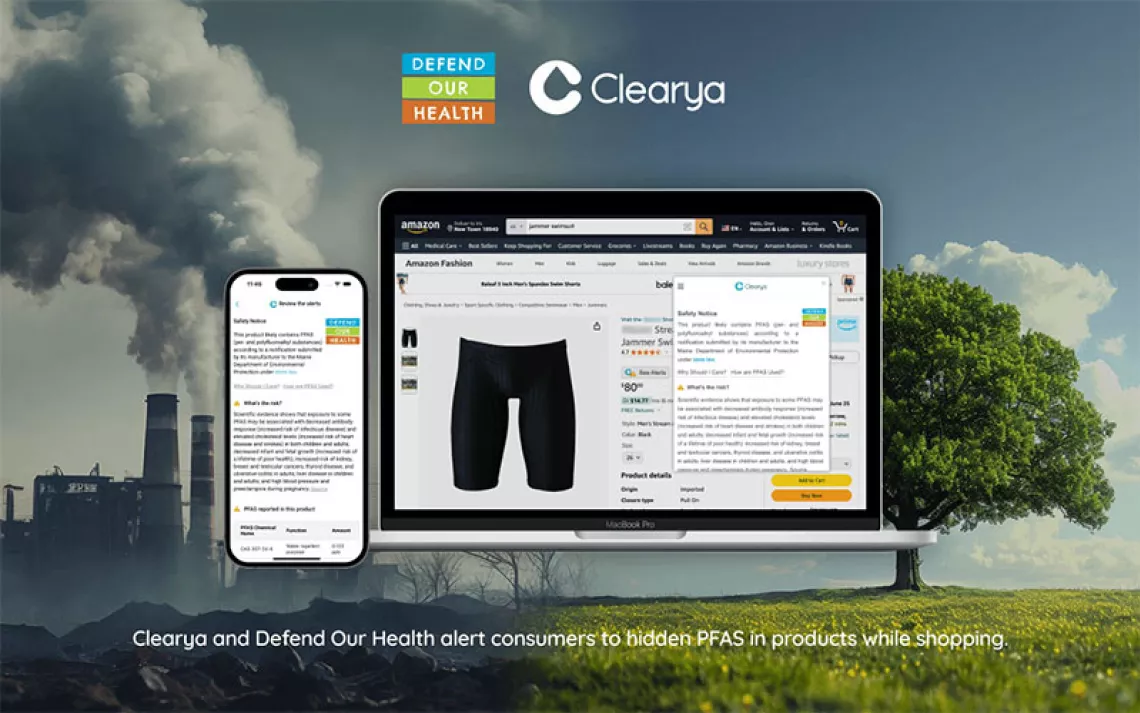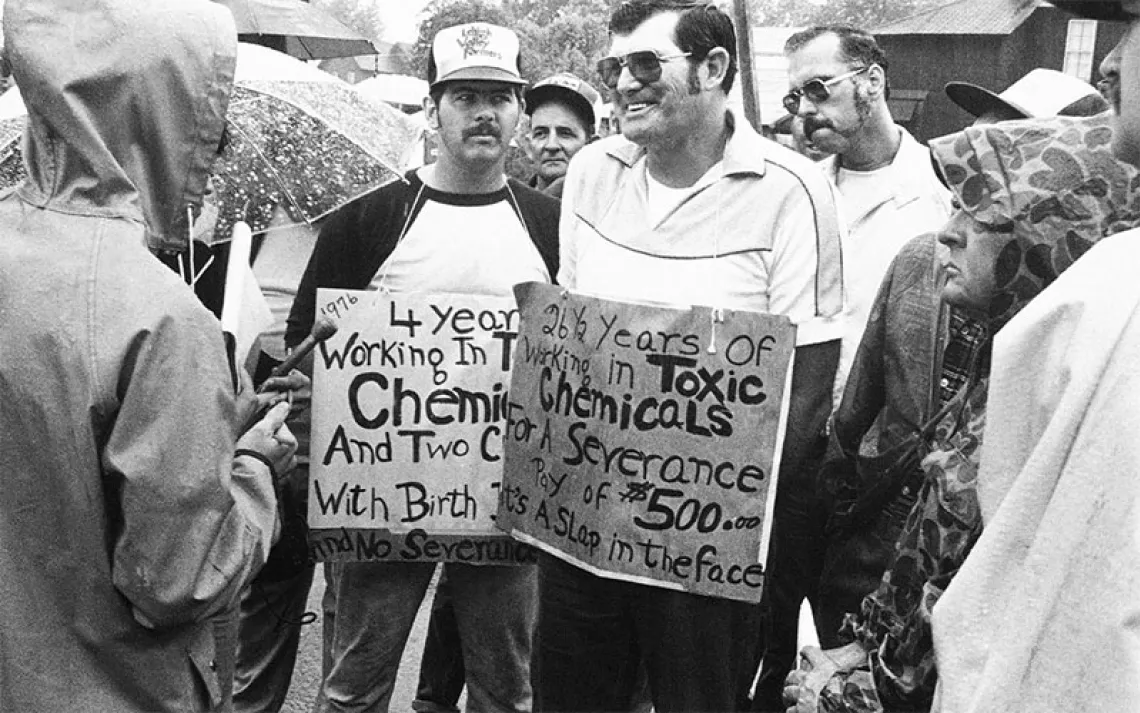Senate Hears Testimony on Regulating PFAS Contaminants
Outcry over contaminated drinking water leads to demands for oversight

Photo by dkfielding/iStock
Yesterday, the Senate heard testimony on the growing public health crisis of per- and polyfluoroalkylsubstances that have contaminated public drinking water, as part of a growing bipartisan effort to get the EPA to regulate PFAS. The class of toxic chemicals, commonly used in nonstick cookware, firefighting foam, and many consumer products, has been discovered in high concentrations in cities near military bases and industrial chemical manufacturing plants. Exposure to PFAS has been linked to various cancers in adults and children, kidney disease, birth defects, and developmental disorders. Senators representing states with PFAS contamination have been putting their weight behind getting the chemicals recognized as a hazardous substance, which would trigger nationwide testing and remediation of drinking water resources that serve millions of Americans.
The hearing comes amid a wave of criticism over the EPA’s delayed response to regulating PFAS despite decades of private lawsuits against chemical manufacturers and scientific data showing its human and environmental health hazards. Earlier this month, bipartisan bills demanding federal oversight of PFAS were introduced in the House and Senate, co-sponsored by representatives from Michigan, Florida, Delaware, Washington, and New Hampshire. The bills, known as the PFAS Accountability Act of 2018 in the House and PFAS Accountability Act (S. 3381) in the Senate, would require federal agencies to work with impacted states to “facilitate testing, monitoring, removal, and remediation” of PFAS from contaminated drinking water resources. Agencies would be required to come up with a plan of site remediation and enter a cooperative agreement with affected states within one year of a request.
“We cannot underestimate the seriousness of PFAS contamination in Michigan and across the country,” Congressman Dan Kildee (D-MI), a co-sponsor of the House bill, said in a statement. “Families and veterans deserve to have their government held accountable for the contamination they have caused.” Michigan has a long history of fighting PFAS through private lawsuits and community organizing due to its large concentration of military bases and chemical manufacturing companies.
Momentum for federally regulating PFAS has been brewing at the EPA for months. In May, media reports revealed that the Trump administration delayed the release of an important study on PFAS exposure by the Agency for Toxic Substances and Disease Registry. The still-unpublished report contradicts the EPA’s current nonenforceable lifetime health advisory of 70 parts per trillion for PFAS exposure, recommending instead a reduced maximum of 10 ppt. (At the hearing, when pressed on whether the ATSDR report would trigger the EPA to revise their PFAS health advisory limit, EPA representative Peter C. Grevatt stated that “based on current science our value is supported” and that “there’s a difference” between ATSDR’s scientific focus and the EPA’s.)
Soon after the delayed report made headlines, former EPA head Scott Pruitt convened a closed-door national leadership summit in May with congressional leaders and public health groups, where he committed to starting the process toward finally registering PFAS as a hazardous substance. This is a complicated process that often takes years to complete: At yesterday’s hearing, in response to repeated demands from senators for a timeline of when the EPA would set an enforceable maximum contaminant level, Grevatt countered that the agency is required to execute a series of time-consuming steps outlined in the Safe Water Drinking Act. Those steps would include creating a multiagency recommendation for site cleanups and allowing over a year of public comments. Those comments would then be considered in a lengthy cost-benefit analysis weighing economic and public health risks before the EPA could decide (or not) to issue a maximum contaminant level.
The EPA has already begun executing a crucial part of that process in an unusually public way. The agency scheduled a series of “listening sessions” in impacted communities across the country last summer. EPA officials have flown to town-hall-style meetings, where people who live near PFAS-contaminated waterways shared their experiences, drilled officials with questions, and demanded federal and industrial accountability. The sessions are ongoing through the fall, with the next round scheduled in Michigan on October 4 and 5. Such sessions are unprecedented in the EPA’s history of reviewing candidates for hazardous substance listings.
“There’s a lot of public interest in it,” says Bob Benson, a drinking water toxicologist at the EPA. He attended the listening session in Colorado Springs, where runoff from military firefighting foam has contaminated multiple municipal water resources. “Normally, the public doesn’t read about the contaminants in their drinking water from articles in the press. It’s very unusual to have a big public process like what we’re having for PFAS. It’s never been done before that way.”
For communities impacted by contaminated drinking water sources, yesterday’s hearing is a sign that justice may finally be coming, albeit through a long road of bureaucracy. Liz Rosenbaum founded the Fountain Valley Clean Water Coalition in Colorado after residents were told that the two military bases bordering their city had been contaminating municipal waterways for decades. Fountain Valley has a high population of people with kidney cancer, which has been directly linked to PFAS exposure.
“Three out of five families I talk to when spreading awareness of PFAS have lost someone to kidney cancer,” Rosenbaum says. “Four out of five people have autoimmune diseases here. Our community wants to know, is this specifically due to the PFAS in our drinking water?” Another major concern is waste management: PFAS bioaccumulates in the bloodstream for many years, and is also present in human waste. “My whole family is affected,” Rosenbaum says. “We travel to other parts of the country all the time. Everywhere we use the bathroom, the contamination will spread.”
At the hearing, members of communities with contaminated drinking water demanded that the EPA fast-track regulation and shoulder the financial burdens of site remediation. In New Hampshire, Andrea Amico sent her two children to a day care center built on the former Pease Air Force Base, where her husband also worked. In 2015, parents discovered that the drinking water supplied to the day care center from the base had high concentrations of PFAS; now, Amico’s children must undergo multiple blood tests and monitoring for signs of developmental complications. “Impacted community members cannot begin to compete with the billion-dollar budgets of the responsible teams,” Amico testified at the hearing. “Communities should not be financially responsible for cleaning up sites, obtaining alternative water supplies, lost wages due to illness, and medical bills. The financial burden should fall on the Department of Defense and [the chemical] industry.”
Even with bipartisan support for PFAS regulation, the road to registering it as a hazardous substance will require a consistent strategy agreed upon by multiple public health agencies as well as the Department of Defense. Currently, states are left to deal with PFAS cleanup on their own, and the patchwork strategies that states have taken has left communities feeling disoriented about their options. “The fear of the unknown,” said Amico, was the worst part of discovering high levels of PFAS in a community. Seeing “blood tests showing high levels [of PFAS contamination], but not knowing what it means. We are seeing other states take different steps, different measures, leaving us wondering why [they] will set lower limits for PFAS than ours. It’s very confusing for community members: What science are they seeing. What data do they have?
“Impacted communities cannot wait any longer for inaction and a disjointed effort from our government,” Amico said. “We need action now.”
 The Magazine of The Sierra Club
The Magazine of The Sierra Club



